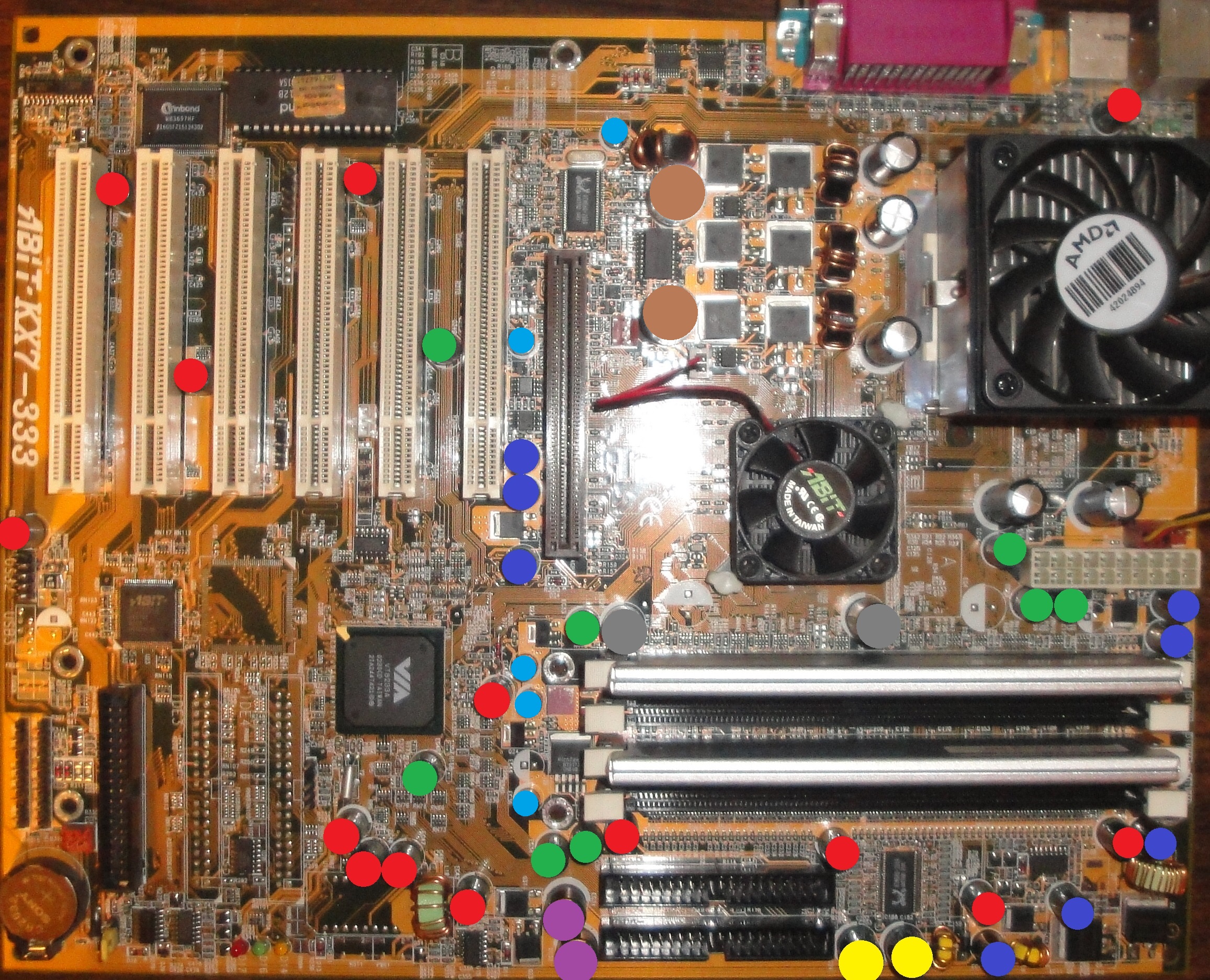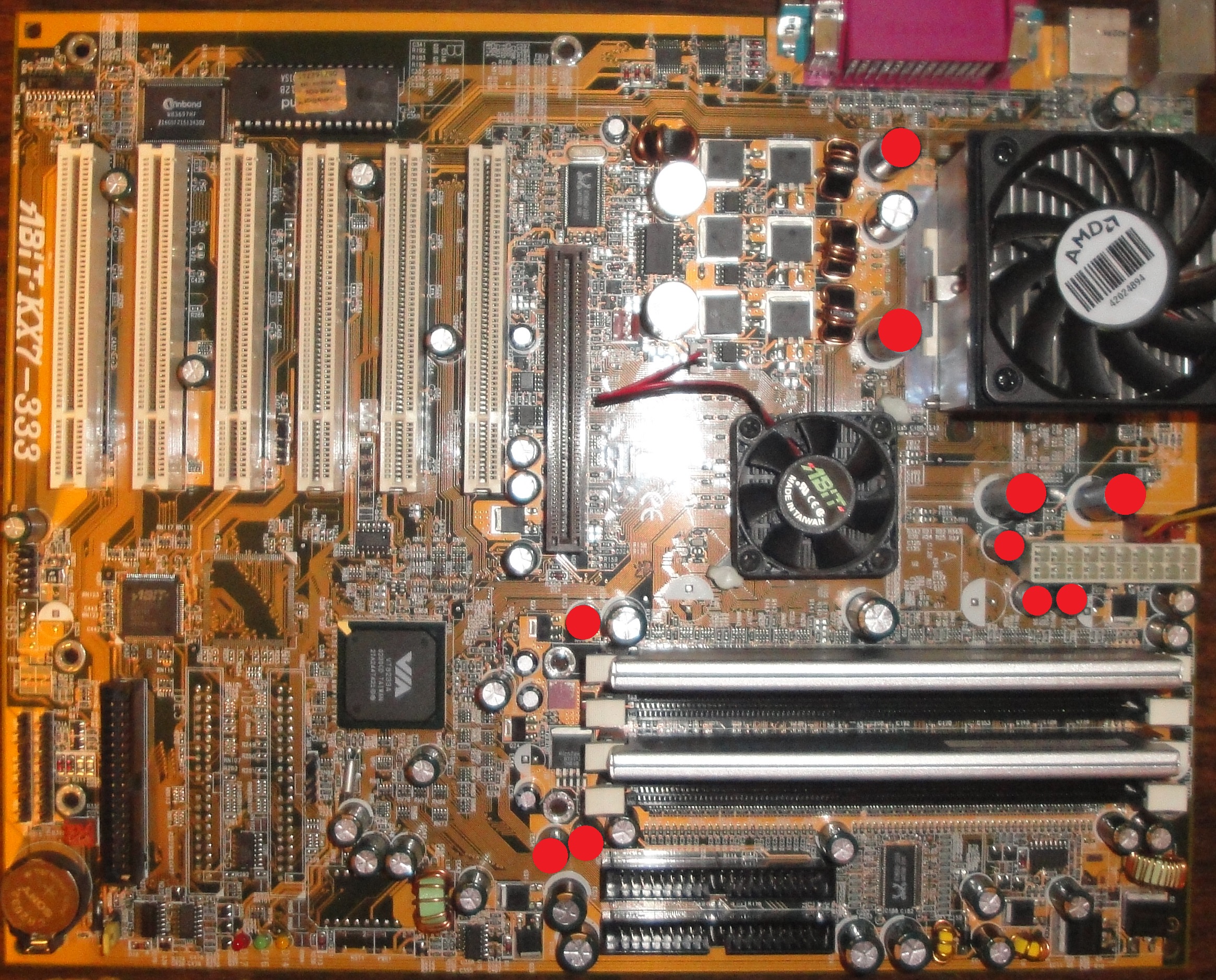Current Status: Working
Concern: small leaks and minor bulges on caps
Complete capacitor inventory and Color Code Legend:
2x Nichicon 4700 HD 6.3v H0147 BROWN
5x Nichicon 3300uF 6.3v (Tall Black near CPU)
2x Teapo 2200uF 6.3v GRAY
2 x Teapo 1000uF 16v YELLOW
14 x Teapo 1000uF 10v RED
8 x Teapo 1500uF 6.3v BLUE
8 x Teapo 1000uF 6.3v GREEN
2 x Teapo 470uF 6.3v PURPLE
5 x Teapo 100uF 16v CYAN

The ones with bulges and/or detected leaks are marked here in red:

If I'm going to bother with changing SOME caps, wouldn't it just be a good idea on a board this old (from 2001) to just get a total re-cap job and be done? The board is working as of this posting, but I plan to drop a newer "Barton" Athlon XP 3000+ processor to replace the current "Palomino" 1800+ chip and a much higher powered Radeon X700 Pro to replace the current Radeon 9550xl.
I have taken many pictures of this board's caps, but I only posted these two as the most informative. If you need other shots, I can post them. I hang out mostly at Vogons.org and a guy on Facebook clued me into taking a closer look at the caps (I had noticed the bulging, but not the leaking ones).
Concern: small leaks and minor bulges on caps
Complete capacitor inventory and Color Code Legend:
2x Nichicon 4700 HD 6.3v H0147 BROWN
5x Nichicon 3300uF 6.3v (Tall Black near CPU)
2x Teapo 2200uF 6.3v GRAY
2 x Teapo 1000uF 16v YELLOW
14 x Teapo 1000uF 10v RED
8 x Teapo 1500uF 6.3v BLUE
8 x Teapo 1000uF 6.3v GREEN
2 x Teapo 470uF 6.3v PURPLE
5 x Teapo 100uF 16v CYAN
The ones with bulges and/or detected leaks are marked here in red:
If I'm going to bother with changing SOME caps, wouldn't it just be a good idea on a board this old (from 2001) to just get a total re-cap job and be done? The board is working as of this posting, but I plan to drop a newer "Barton" Athlon XP 3000+ processor to replace the current "Palomino" 1800+ chip and a much higher powered Radeon X700 Pro to replace the current Radeon 9550xl.
I have taken many pictures of this board's caps, but I only posted these two as the most informative. If you need other shots, I can post them. I hang out mostly at Vogons.org and a guy on Facebook clued me into taking a closer look at the caps (I had noticed the bulging, but not the leaking ones).
 over a difference of opinion.
over a difference of opinion.
Comment